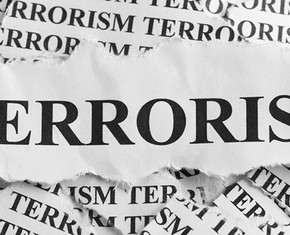The views expressed in our content reflect individual perspectives and do not represent the authoritative views of the Baha'i Faith.
The main principle and purpose of the Baha’i Faith is to establish peace and unity among all the peoples of the Earth—and naturally, many of us feel drawn to making this idea a reality.
But where do we even start in such a big, complex world?
The idea of a united planet where prejudice and violence no longer exist seems wonderful, but beyond the conceptual it often sounds utopian. Because humanity has only ever known wars, corrupt governments, prejudiced societies and mass disenfranchisement, the idea that everything could somehow change for the better feels like a fantasy. So are the Baha’is pursuing an impossible dream?
When we look at the Baha’i teachings for answers, clear guidance emerges. Certainly a lot needs to be fixed in the world, and even more needs to be built from scratch—but the Baha’i teachings offer a series of steps towards achieving those goals, and they’re a lot more concrete than some might think.
Abdu’l-Baha, the son of Baha’u’llah, the prophet and founder of the Baha’i Faith, indicated that we first need universal education to establish a harmonious world—an education that spans people of all ages, backgrounds and social classes:
Baha’u’llah has announced that inasmuch as ignorance and lack of education are barriers of separation among mankind, all must receive training and instruction. Through this provision the lack of mutual understanding will be remedied and the unity of mankind furthered and advanced. Universal education is a universal law. – Abdu’l-Baha, The Promulgation of Universal Peace, p. 299.
The day is coming when all the religions of the world will unite, for in principle they are one already. There is no need for division, seeing that it is only the outward forms that separate them. Among the sons of men some souls are suffering through ignorance, let us hasten to teach them; others are like children needing care and education until they are grown, and some are sick—to these we must carry Divine healing. – Abdu’l-Baha, Paris Talk, p. 121.
To teach and “carry Divine healing” seem like rather abstract concepts at first glance. But doing our best to understand what these spiritual instructions imply for our daily lives is part of the process, because it forces us to look both inwards and outwards and ask: What do we need to improve about ourselves to be able to do these things? What do the people around us really need? And who else can join us in this purpose?
Oh, and one more question: how can we do all of that without allowing pride to seep into our actions, making us think that we are somehow better than anyone else? Baha’u’llah says of each one of us who is trying to make the world a better place:
He must never seek to exalt himself above anyone, must wash away from the tablet of his heart every trace of pride and vainglory, must cling unto patience and resignation, observe silence, and refrain from idle talk. – Baha’u’llah, The Book of Certitude, p. 193.
The Baha’i teachings say that our quest to improve ourselves and the world around us should manifest itself in action, not “idle talk”—which means actively doing something. Changing the world all at once will never happen, but on a smaller scale, we can each set and reach a series of ambitious goals that help us advance toward the larger purpose. After all, those of us who work for peace and unity all attempt to do something that has never been done before, so we need a system and a sequence of achievable milestones to measure our progress and encourage us to keep going.
The Baha’i community around the world has identified this need to begin with smaller-scale efforts that build our own capacity, as we learn with others how to create that unified, supportive and diverse community we humans have always dreamed of establishing. In response to this need, a series of harmonious interconnected activities arose—which Baha’is sometimes call “core activities:” children’s classes, junior youth groups, study circles and devotionals.
Millions of people around the world are involved in these activities, identifying the inner and outer needs of their local communities and combining spiritual principles with their cultural strengths to build something that has truly never been seen before.
Through the spiritual and material education of children and youth, which ensures that the future generation will have the skills to face the difficult moral decisions and complicated challenges that lie ahead for humanity, entire families come together to reflect, study and share together with a new sort of communication—one that isn’t based on material interests, an “us vs. them” mentality, or a hierarchical order. Instead, these activities arise from a grassroots desire to come together as a community, putting aside all prejudice and humbly learning what it takes to build the kind of future world we want to see:
… a single social organism, representative of the diversity of the human family, conducting its affairs through a system of commonly accepted consultative principles, and cherishing equally all the great outpourings of divine guidance in human history. Its existence is yet another convincing proof of the practicality of its Founder’s vision of a united world, another evidence that humanity can live as one global society, equal to whatever challenges its coming of age may entail. – The Universal House of Justice, The Promise of World Peace, October 1985.
There was a time when eradicating a disease like the Black Plague might have represented a utopian dream—or establishing a system of communications that could span the planet might have seemed like science fiction. But we did it, little by little, by working in small groups and developing our vision … until it became an accepted reality.
What makes the idea of world peace and the unity of all mankind seem impossible is the fact that we have never seen it ourselves. But what if we did see it in our households, our friendships, our neighborhoods, even in our villages, towns and cities? Would it seem so unattainable then?
In swiftly-growing groups, the Baha’i community establishes a new social pattern, a new way of thinking, and a new set of communal priorities that encompass both the material and the spiritual. People who participate in these activities—both the Baha’is and those who aren’t Baha’is—have begun to see a glimpse of the unity and oneness we can create together. It may take many generations of wholehearted, sincere learning, as new challenges arise and we struggle against the old tendencies towards hatred and distrust, but we have already planted the seeds, and we are watching our saplings grow. We’re seeing that world unity is absolutely possible—and well within our reach.
















Comments
Sign in or create an account
Continue with Googleor